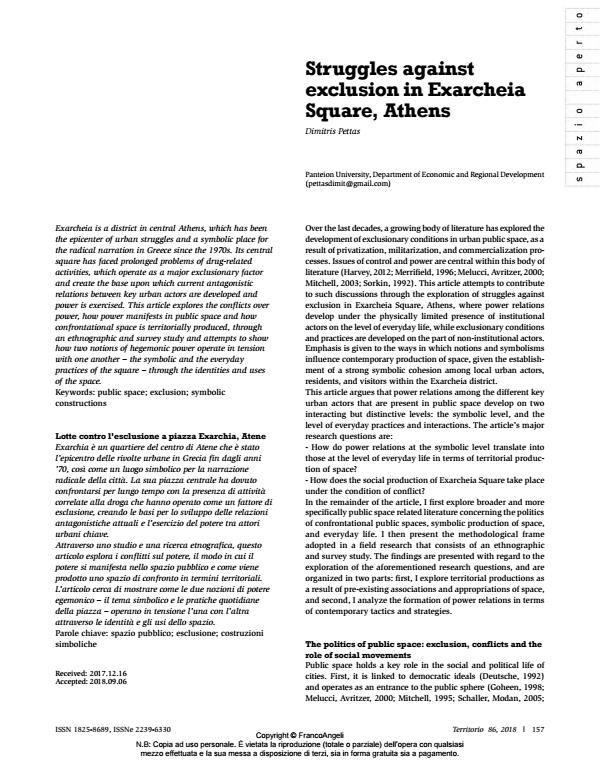Struggles against exclusion in Exarcheia Square, Athens
Journal title TERRITORIO
Author/s Dimitris Pettas
Publishing Year 2019 Issue 2018/86
Language English Pages 10 P. 157-166 File size 1179 KB
DOI 10.3280/TR2018-086020
DOI is like a bar code for intellectual property: to have more infomation
click here
Below, you can see the article first page
If you want to buy this article in PDF format, you can do it, following the instructions to buy download credits

FrancoAngeli is member of Publishers International Linking Association, Inc (PILA), a not-for-profit association which run the CrossRef service enabling links to and from online scholarly content.
Exarcheia is a district in central Athens, which has been the epicenter of urban struggles and a symbolic place for the radical narration in Greece since the 1970s. Its central square has faced prolonged problems of drug-related activities, which operate as a major exclusionary factor and create the base upon which current antagonistic relations between key urban actors are developed and power is exercised. This article explores the conflicts over power, how power manifests in public space and how confrontational space is territorially produced, through an ethnographic and survey study and attempts to show how two notions of hegemonic power operate in tension with one another - the symbolic and the everyday practices of the square - through the identities and uses of the space.
Keywords: Public space; exclusion; symbolic constructions
Dimitris Pettas, Struggles against exclusion in Exarcheia Square, Athens in "TERRITORIO" 86/2018, pp 157-166, DOI: 10.3280/TR2018-086020